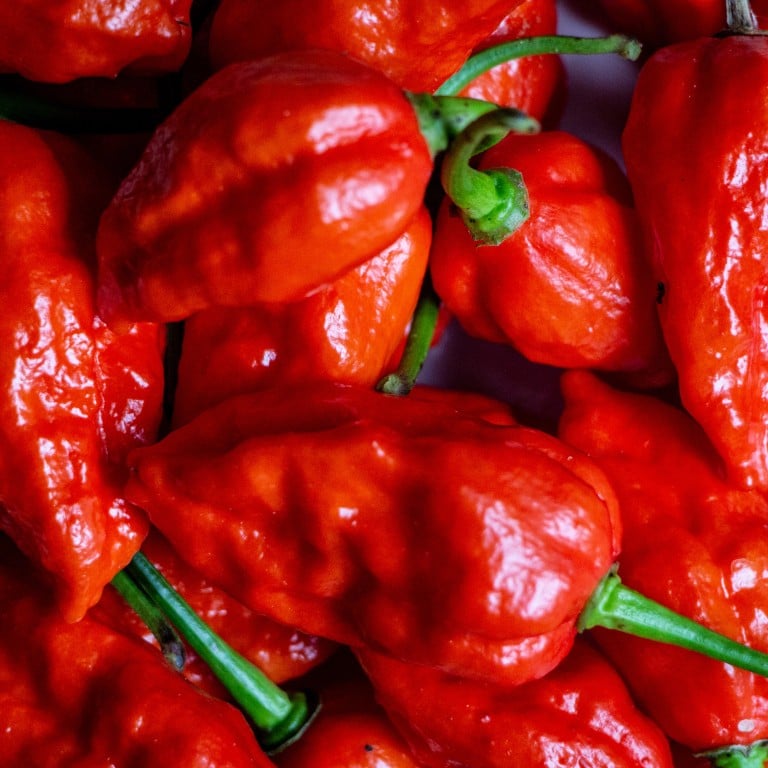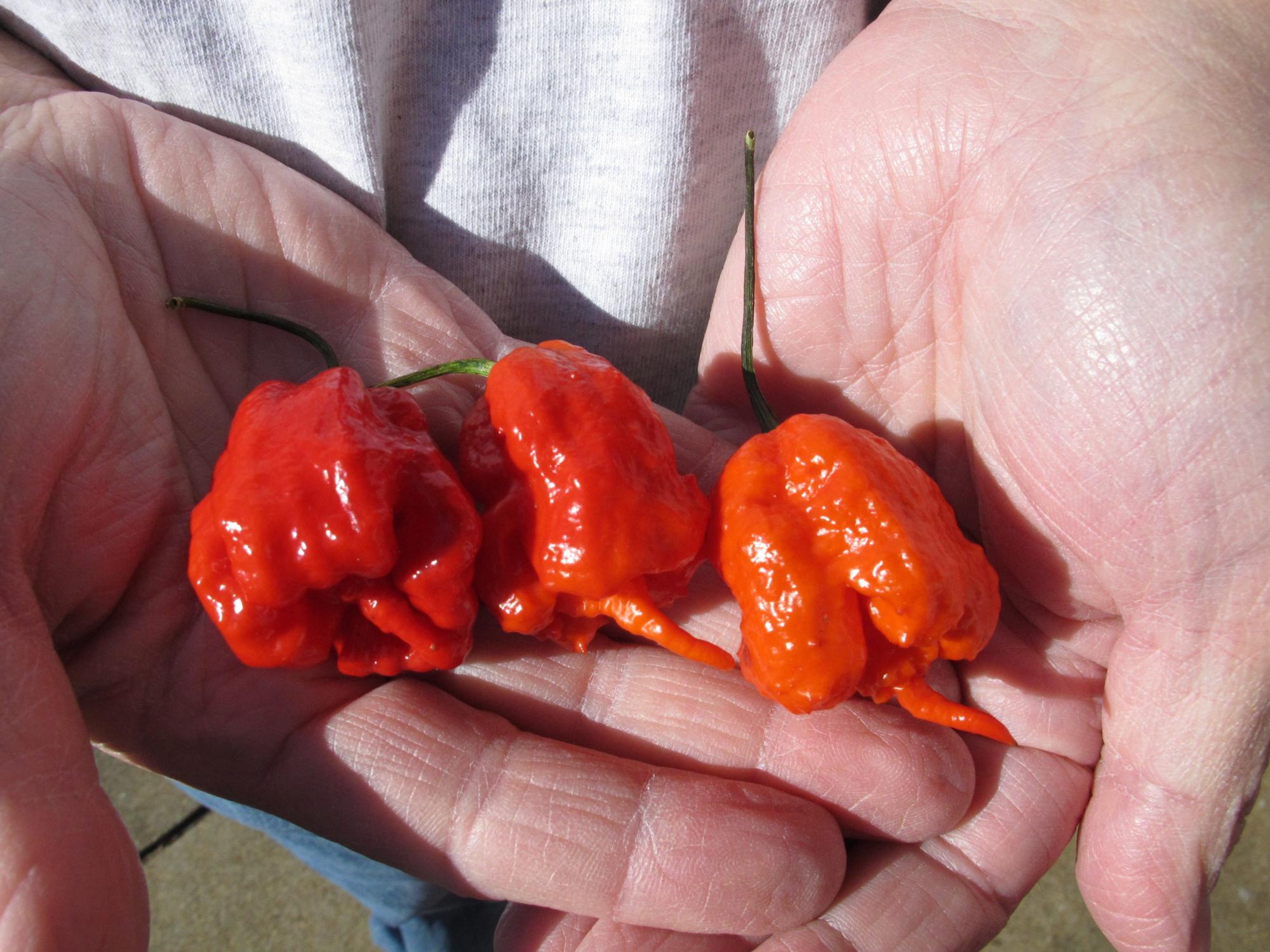
What are the hottest chilli peppers in the world? From Carolina Reaper to Trinidad Scorpion, these are the spiciest you can eat
- With heat levels that are 275 times that of the hottest jalapeño, Carolina Reapers are the spiciest, according to Guinness World Records
- Created by Smokin’ Ed Currie, they are closely followed by Trinidad Scorpions and 7 Pot varieties
Are you a fan of spicy foods? How about the hottest pepper in the world?
The title is a coveted one, ranked by Guinness World Records and held by chilli farmers looking to challenge the meaning of the word “spicy”.
There are an estimated 50,000 types of chilli pepper in the world, resulting from domestication over 6,000 years ago in Peru and Mexico. These peppers file into five categories – Capsicum annuum, Capsicum chinense, Capsicum frutescens, Capsicum baccatum and Capsicum pubescens.
But one ranks above them all as the world’s hottest pepper.

What is the hottest pepper in the world?
The world’s hottest pepper is the Carolina Reaper, a cultivar of the Capsicum chinense plant, grown by “Smokin” Ed Currie of the PuckerButt Pepper Company in Fort Mill, South Carolina, in the United States.
A spice lover’s favourite Korean and Sichuan restaurants in Hong Kong
Ranked as Guinness World Records’ hottest pepper, the Carolina Reaper peaked at about 2.2 million Scoville Heat Units, the scale used to rank how spicy peppers are. It averages around 1.6 million SHU.
For comparison, the jalapeño pepper (a cultivar of Capsicum annuum) registers about 2,500 to 8,000 SHU and cayenne pepper (a type of Capsicum annuum) has a spiciness rating of 30,000 to 50,000 SHU.
According to Man of Many, an Australian independent digital lifestyle publication and website, Currie created the Reaper by crossbreeding a Naga Viper pepper from a doctor in Pakistan and a habanero from the island of St Vincent in the Caribbean.

Can you eat the world’s hottest pepper?
Can you safely consume a raw Carolina Reaper? For some, the idea may never cross their mind.
How the ‘foreign’ chilli became a part of Chinese culture
In 2020, the US’ National Centre for Biotechnological Information reported an incident of a 15-year-old boy who ate a Carolina Reaper and had an acute cerebellar stroke two days later after being admitted to hospital because of headaches.
Others relish an opportunity to eat the world’s spiciest pepper. League of Fire, a website, ranks chilli eating champions with a specific set of rules – they need the details of the official event, the credentials of the witnesses present and no more than 200 Carolina Reapers can be consumed.
The title is held by Gregory “Iron Guts” Barlow of Melbourne, Australia, who ate 160 Reapers in one sitting. In second place is Dustin “Atomik Menace” Johnson of Las Vegas at 122 peppers.

What are the top five hottest peppers?
According to PepperHead, an online hot pepper shop and community, these are the five peppers that pack the most heat:
-
Carolina Reaper: 2,200,000 SHU
-
Trinidad Moruga Scorpion: 2,009,231 SHU
-
7 Pot Douglah: 1,853,936 SHU
-
7 Pot Primo: 1,469,000 SHU
-
Trinidad Scorpion Butch T: 1,463,700 SHU

How do you measure how hot a pepper is?
Pharmacist Wilbur Scoville invented the Scoville scale in 1912 to measure a pepper’s heat. According to Masterclass, an online education platform, Scoville tested peppers by mixing sugar water with an alcohol-based extract of capsaicin oil – the chemical compound in chilli peppers that binds to heat receptors on our nerve endings, making them seem to burn.
Scoville placed the solution on taste testers’ tongues and diluted it with water to rank how spicy the testers thought it was.
Now scientists use a more hi-tech method instead of tongue testing. High-performance liquid chromatography determines the concentration of capsaicin in a pepper but uses the same Scoville ranking system.
Pure capsaicin ranks at 16 million SHU.
